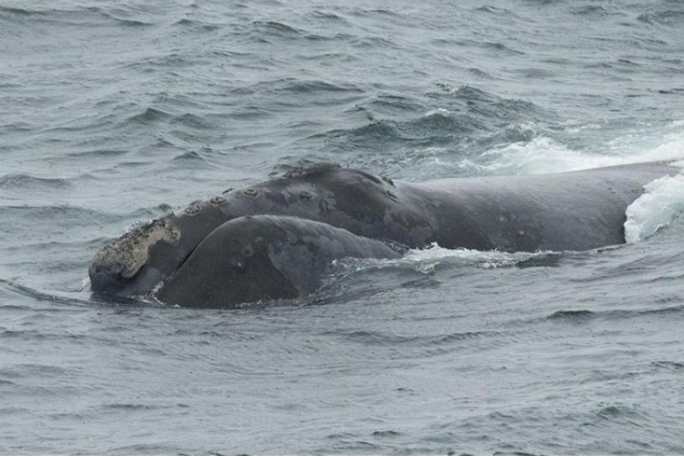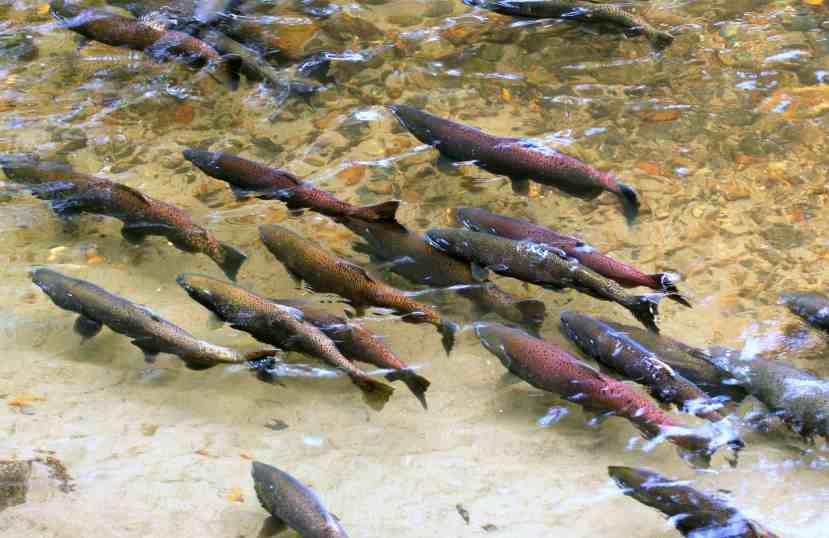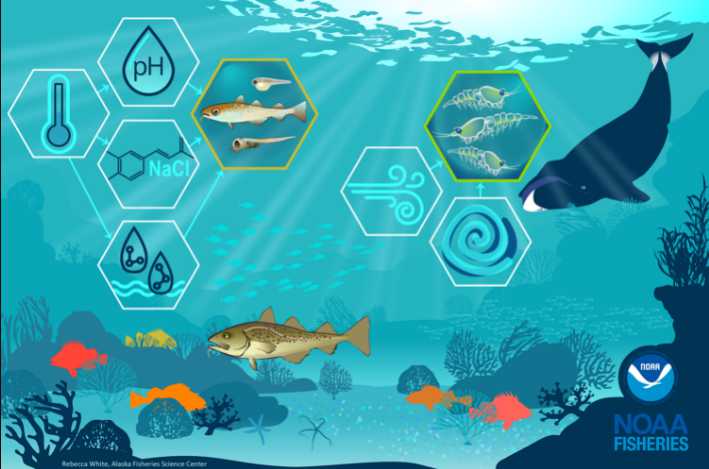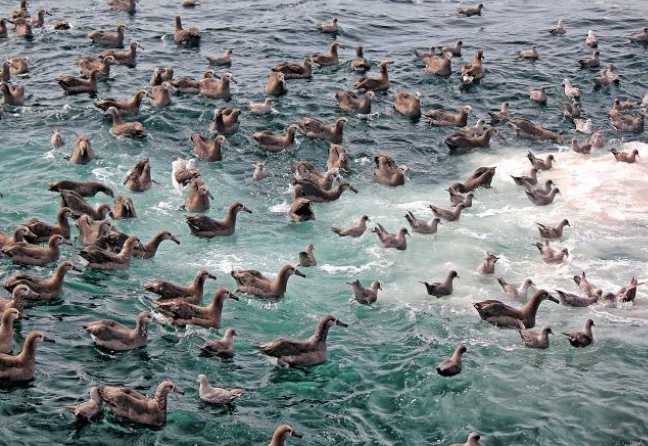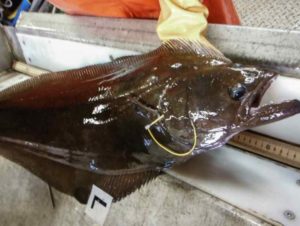
A multiyear archival tagging study identified consistent seasonal and daily patterns of depth-specific behavior by Greenland turbot in Alaska. These new findings provide key information for sustainably managing this commercially valuable population in a changing environment.
Migration and Management of Greenland Turbot
Although Greenland turbot have been well studied in the Atlantic Ocean, relatively little is known about the North Pacific population.
Greenland turbot were heavily exploited in Alaska during the 1970s. Since then harvests have fallen substantially due to catch restrictions in response to apparent low numbers of fish.
Fish movements can affect their availability to stock assessment surveys (catchability), and therefore can impact population estimates. Understanding fish movements and migration helps scientists accurately assess populations and set sustainable harvest limits. It provides insight on fish population changes, habitat preferences, and spawning and feeding behaviors. All of this information supports effective management.
But tracking fish poses special challenges.
“You can observe wildlife on land with a camera and a blind,” said Kevin Siwicke, the NOAA Fisheries biologist who led the study. “But to see what a fish is doing, minute-by-minute at 1200 meters depth in the middle of the ocean, we rely on innovative technology.”
Archival Tagging Technology
To observe movements of individual Greenland turbot across geography, depth, temperature, and time, the scientists deployed archival tags.
Archival tags are electronic data recorders that can be implanted in fish. They record temperature and depth from the time the fish is released until it is recaptured by fishermen.
[content id=”79272″]
“Working with archival tags is really exciting. We can understand what fish are doing by attaching electronic data recorders to them to study their behavior. You can look at a handful of individuals and get insight into the behavior of the population,” Siwicke said.
Release and Recapture of Tagged Fish
Scientists implanted archival tags in 297 Greenland turbot between 2003 and 2011 during Alaska Fisheries Science Center longline surveys in the Bering Sea and Aleutian Islands.
As of November 2018, 22 tags had been recovered by commercial trawl and longline fishing vessels. Of these, 18 contained usable data that were analyzed in the study.
The release and recapture locations of each Greenland turbot provided a minimum straight line distance of travel. During the time fish were swimming freely, which ranged from 19 to 1,859 days, horizontal movements were highly variable. Some fish traveled great distances—one swam more than 500 kilometers. Others were caught within 3 kilometers of where they were released, even though many months had passed.
Patterns of Vertical Movement
The study identified consistent daily and seasonal habitual patterns of depth-specific behavior in Greenland turbot.
“This predictability could help scientists adapt sampling strategies to effectively assess this population and interpret survey and fishery data,” said Siwicke. “Currently, assessment surveys that encounter Greenland turbot take place in the summer and on the bottom. The movement patterns we identified could affect Greenland turbot availability to these surveys.”
Seasonal Patterns
The study found a general trend of movement from cold deep water in winter, to warmer shallow depths in summer. Greenland turbot usually began to transition to deeper depths in October and toward shallower depths starting in March. Both the number and distance of daily ups and downs were highest in winter, when some fish moved vertically more than 1,000 meters a day.
Sex-Specific Behavior
Temperature data were used to assess whether Greenland turbot inhabited the cold pool. The cold pool is a layer of bottom water less than 2°C left by melting sea ice in the Bering Sea. This cold water acts as a barrier for some commercially important fish species like Pacific cod and pollock that prefer warmer waters. In recent warm years the cold pool shrank dramatically, allowing some of those fish to move far north of their known summer feeding grounds. Understanding how Greenland turbot respond to the cold pool could provide insight into how populations might be affected by future warming.
During the study, four of the five female Greenland turbot that were at liberty for a year or longer entered the cold pool. No males appeared to enter the cold pool.
[content id=”79272″]
“This sex-specific difference was unexpected, and the reason for it remains unclear. But this behavior suggests that Greenland turbot availability to stock assessment surveys could vary spatially by sex,” Siwicke said.
Daily Vertical Migration Patterns
Not all Greenland turbot showed diel, or daily, vertical migration patterns, but those that did followed them consistently across years. For those individuals the pattern of migration changed with the seasons.
“We figured there would be diel movement. What was interesting and unexpected was the way Greenland turbot transitioned to a different pattern with the seasons. In summer they came up in the evening and went down during the day. Beginning in fall, the pattern changed incrementally with changing days. By late fall it was a complete flip, they came up during the day and back down in the evening,” Siwicke said.
From May to September, Greenland turbot spent daytime at depth, then swam up the water column to spend the night in shallower water.
“It seems to happen when feeding is the most important behavior, in spring and summer. At that time a lot of things that Greenland turbot eat are in the water column; zooplankton and small fish, including young walleye pollock and capelin. This pattern is common in fish and often related to feeding,” Siwicke explained.
From October to December, they turned their schedules upside down to follow a daily migration pattern that is shallower during daytime.
“This may be a response to changing availability of prey as daylight diminishes in the fall,” Siwicke said.
During January–April, there was no strong pattern, but a gradual transition between patterns.
These shifts in daily vertical migration mean availability of Greenland turbot to stock assessment surveys could vary depending on time of day and season.
Strategies for Adaptability
Beyond common general patterns of movement, there was a great deal of variety among individual fish. However, individual fish were consistent in their own unique seasonal habitual movements. Each fish returned year after year to the same depths in each season.
“Different strategies of individuals may benefit a population that exists in a changing environment where diversification may be important to adapting now and into the future,” said Siwicke.
As waters warm and the cold pool shrinks, there is a general northward shift in distributions of Bering Sea fish species. Some species, like walleye pollock and capelin, important food sources for Greenland turbot, are expected to do poorly during extended warm periods. If the cold pool is small or nonexistent—as happened for the first time in 2018— a Greenland turbot that habitually returns to the continental shelf may find changed foraging opportunities. A variety of individual strategies, such as inhabiting the continental shelf versus slope in the summer or winter, may allow Greenland turbot adapt to a changing environment.
[content id=”79272″]
Next Steps
In the future Siwicke hopes to use a more advanced tagging technology: pop-up satellite tags. This innovative technology tracks the movements of fish over geography as well as depth and temperature. Satellite tags don’t depend on recovery by fishermen to retrieve data. They are preprogrammed to detach from the fish and transmit recorded data on a given date.
“With the geolocation capabilities of satellite tags we could identify where different behaviors are happening between tagging and recovery. We could program them to pop-up on specific dates to target different behaviors,” said Siwicke.
“It’s super exciting. These innovative tagging technologies open up so many possibilities to expand our understanding of the biology and ecology of commercially important fish. They can help us understand how populations may respond to changing conditions,” Siwicke said. “They let us observe the unobservable.”
Kevin Siwicke is a fisheries biologist at the NOAA Fisheries Alaska Fisheries Science Center. Karson Coutré is a fisheries management specialist at The Mid-Atlantic Fishery Management Council and worked on this project under contract to the Alaska Fisheries Science Center.





